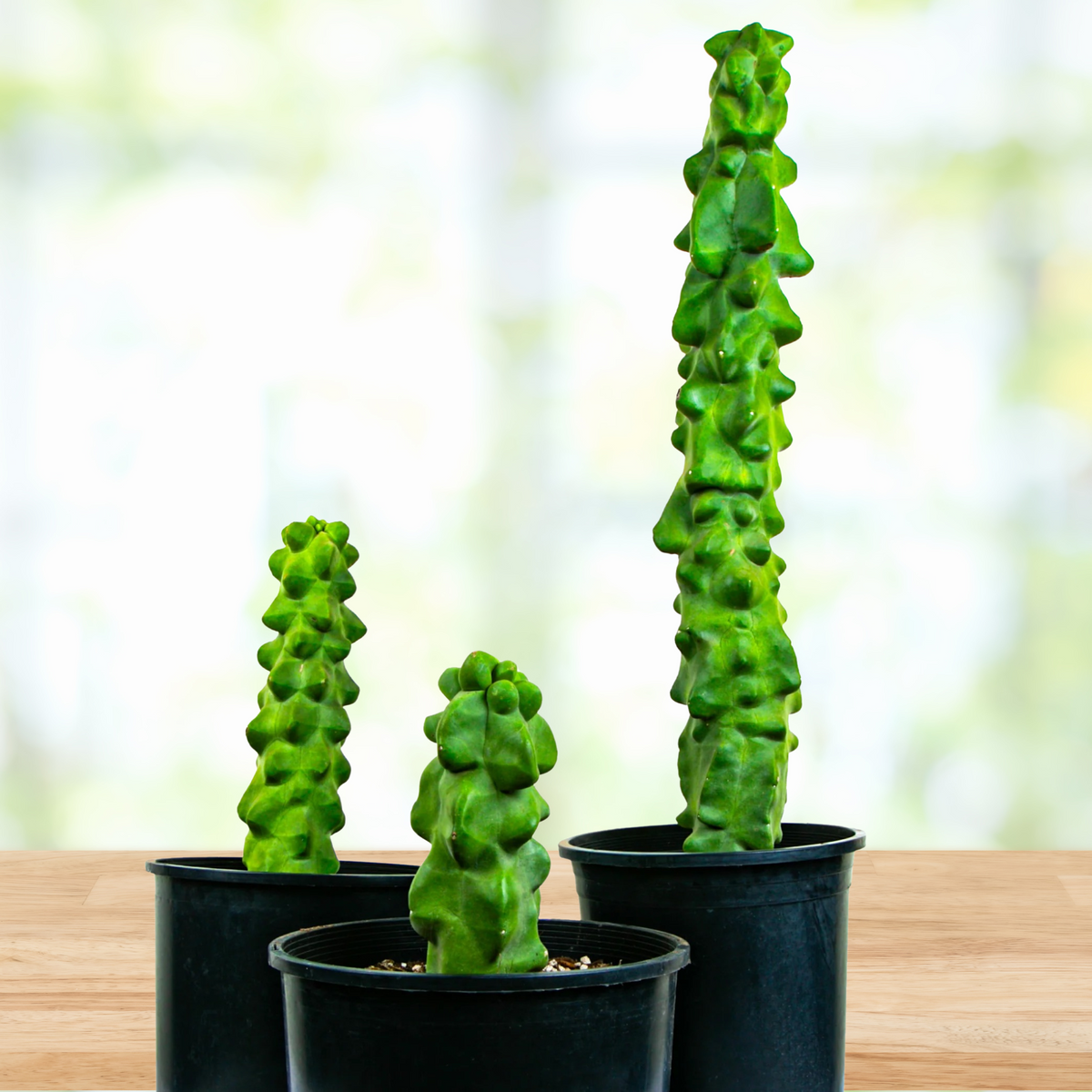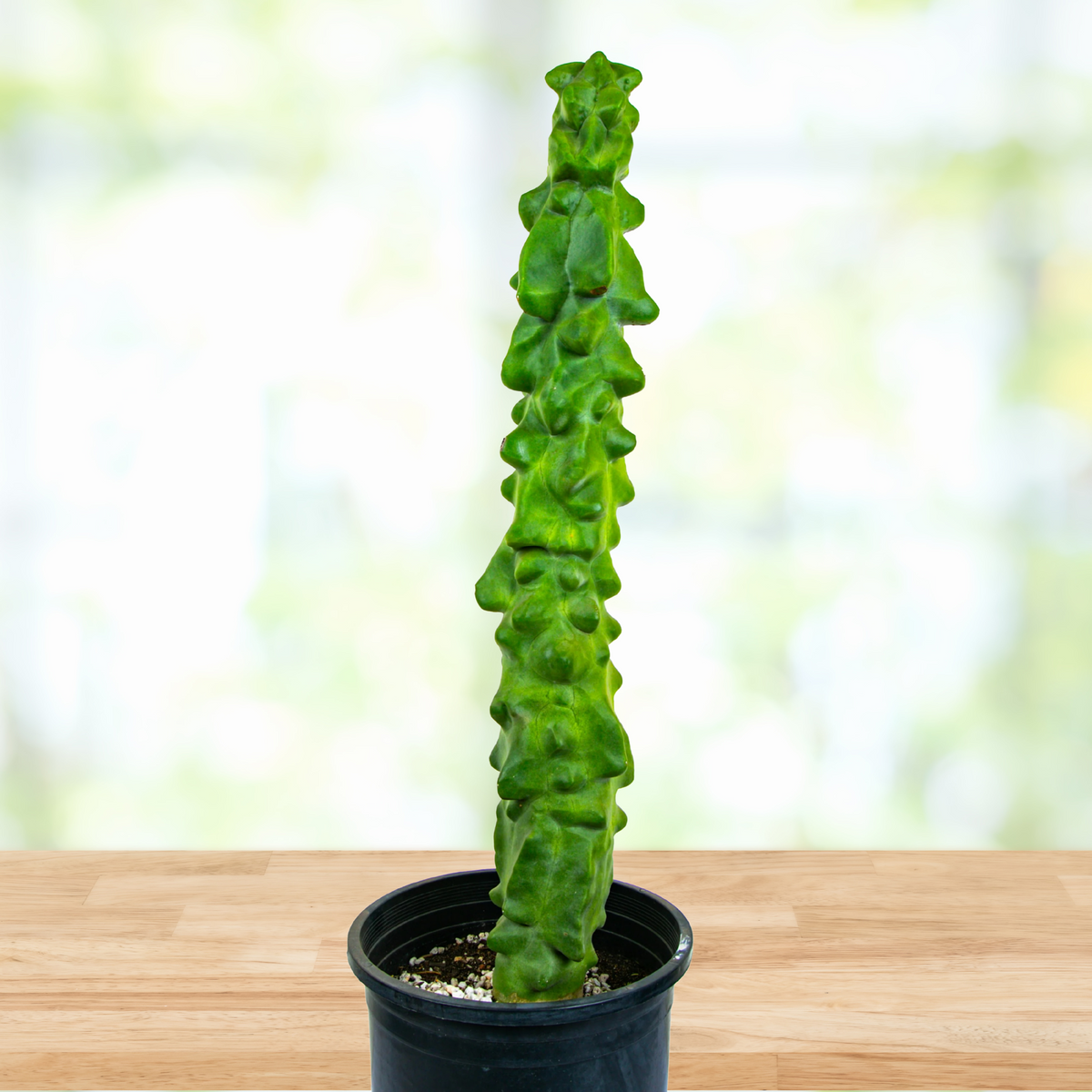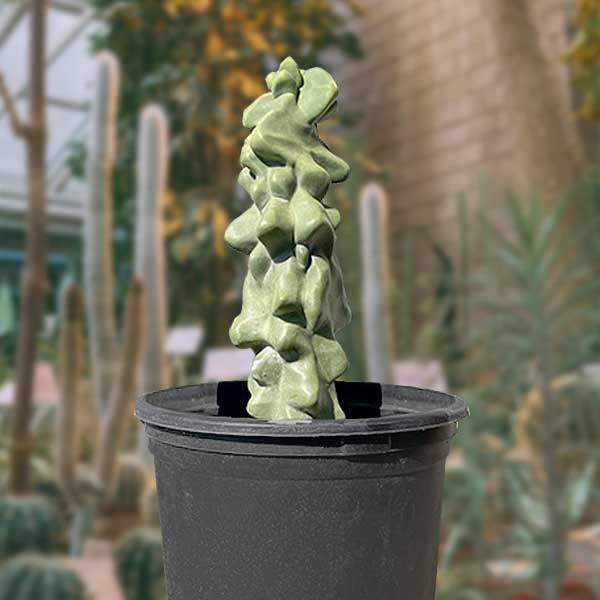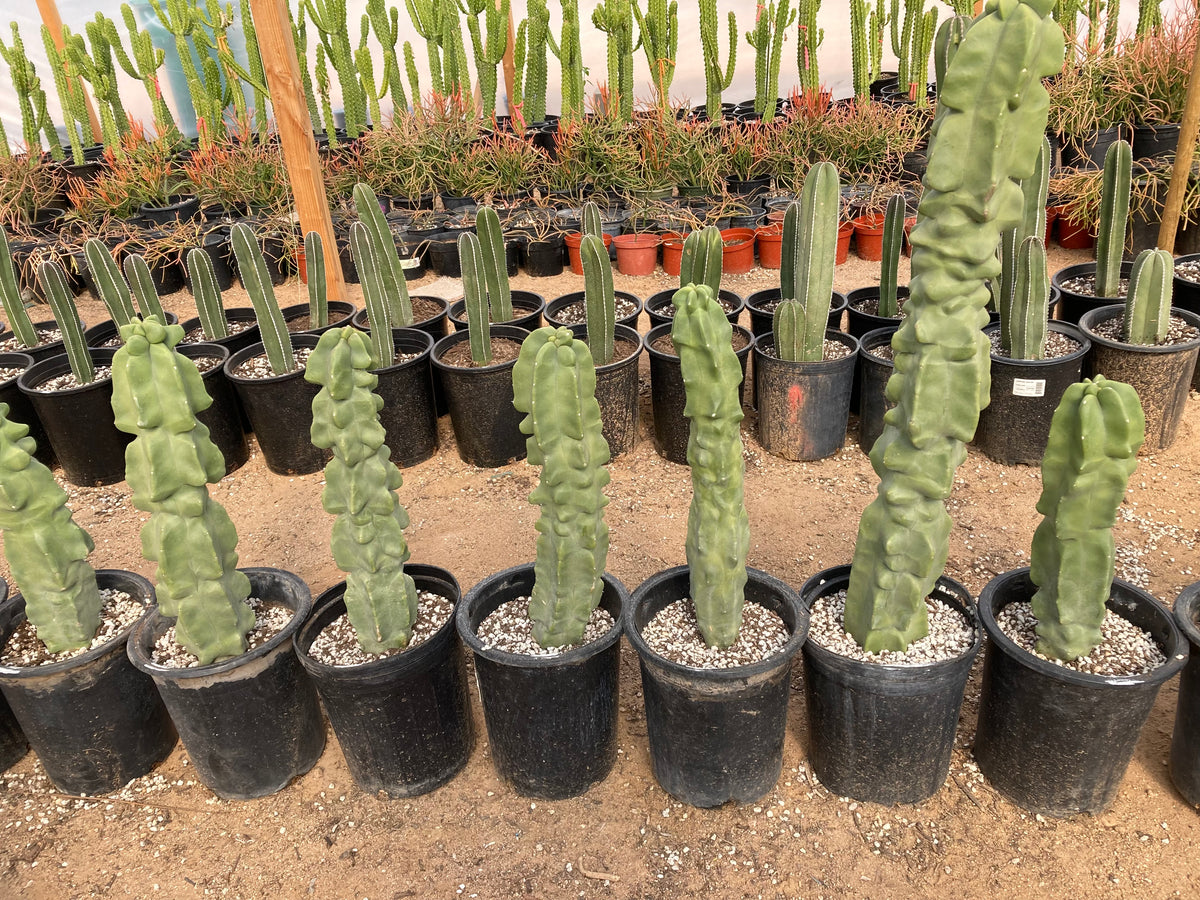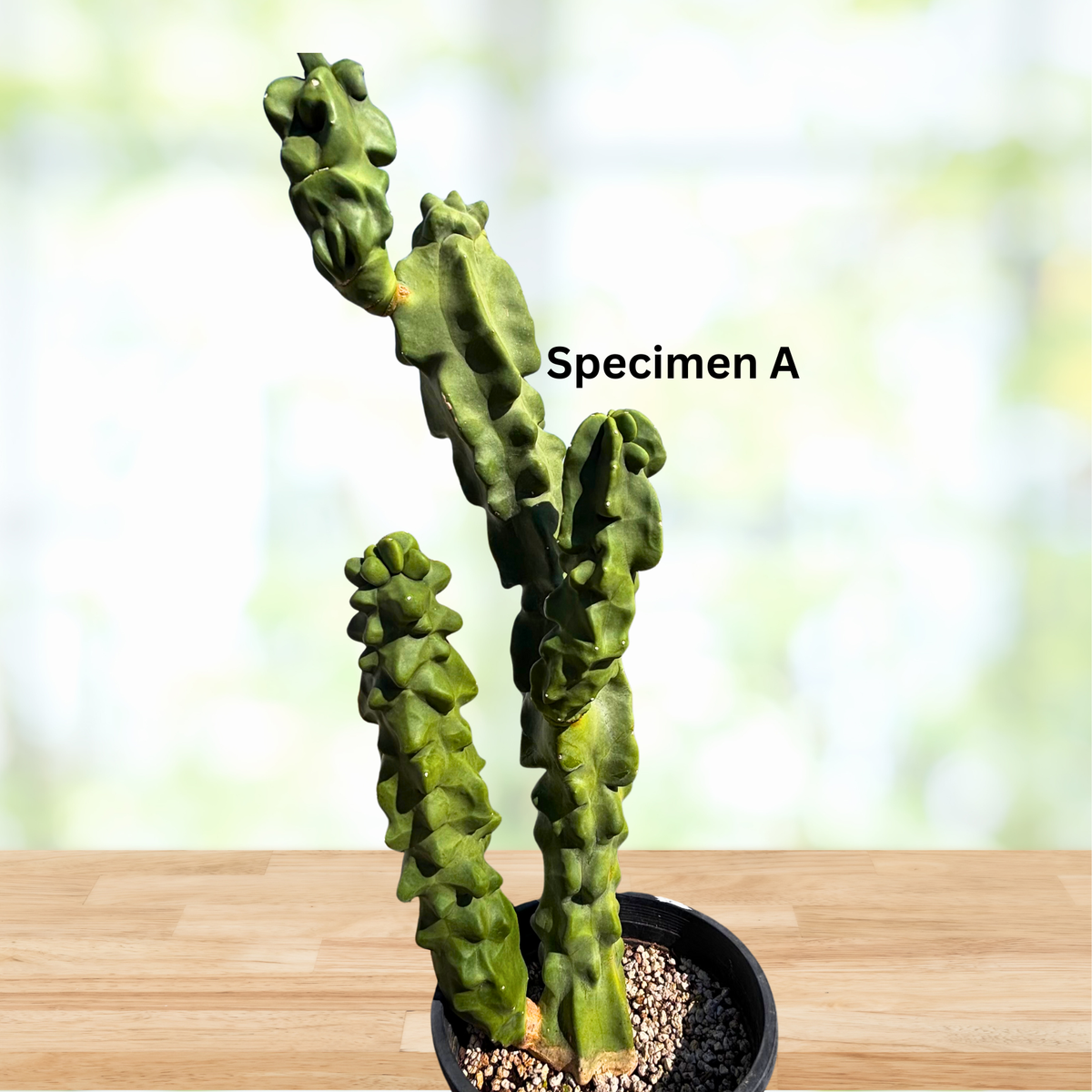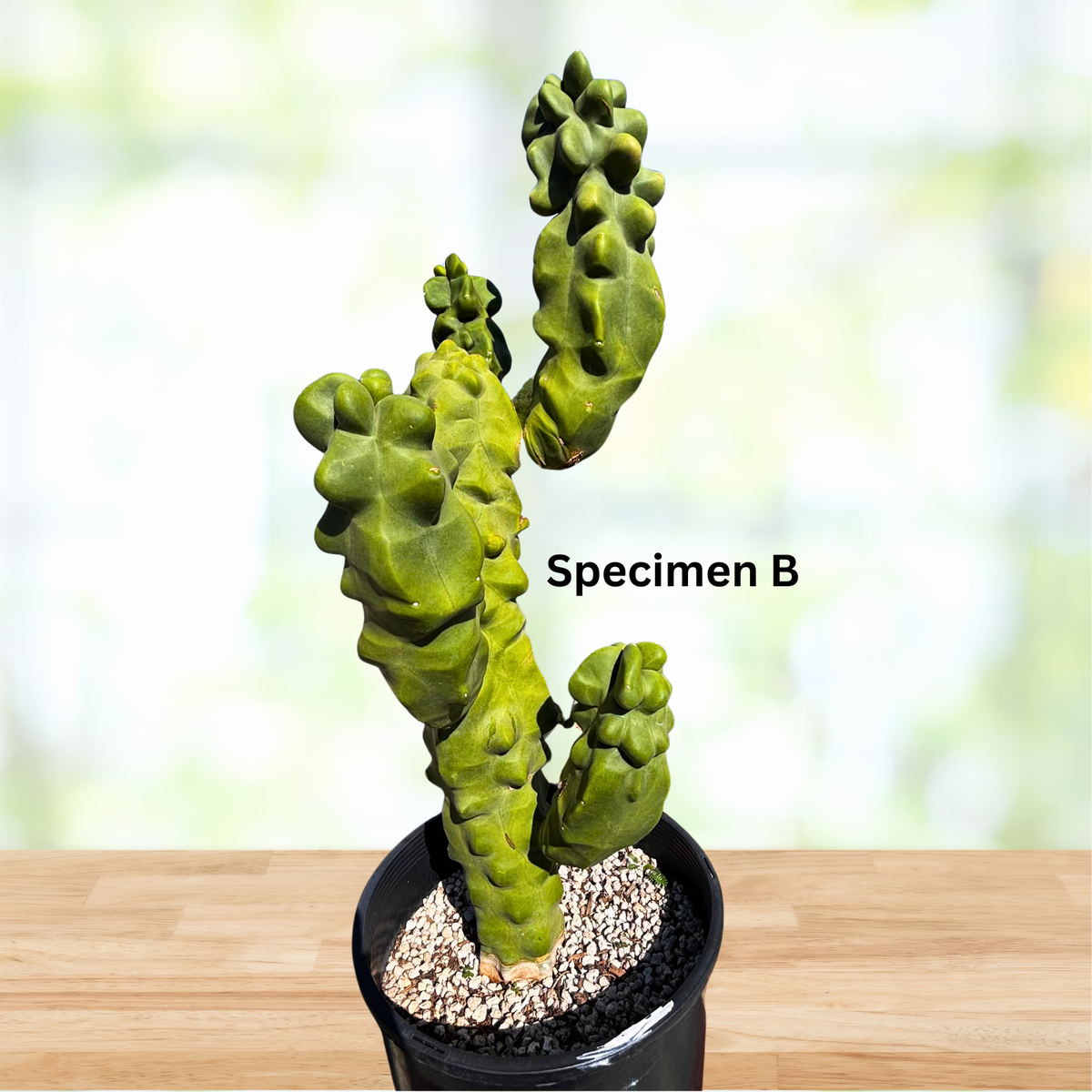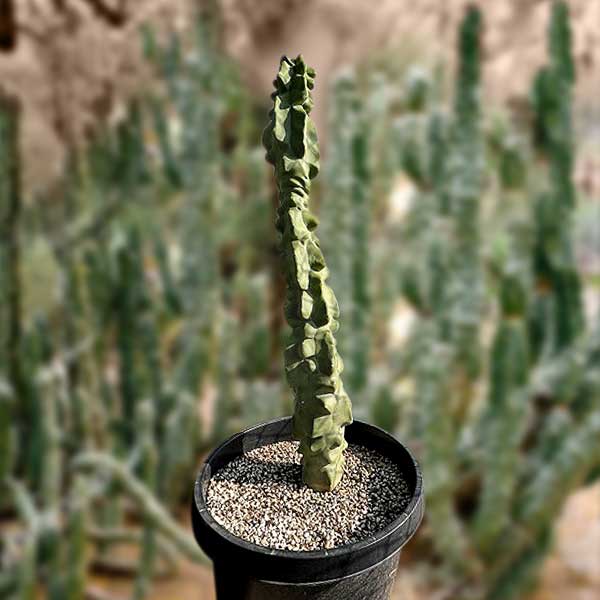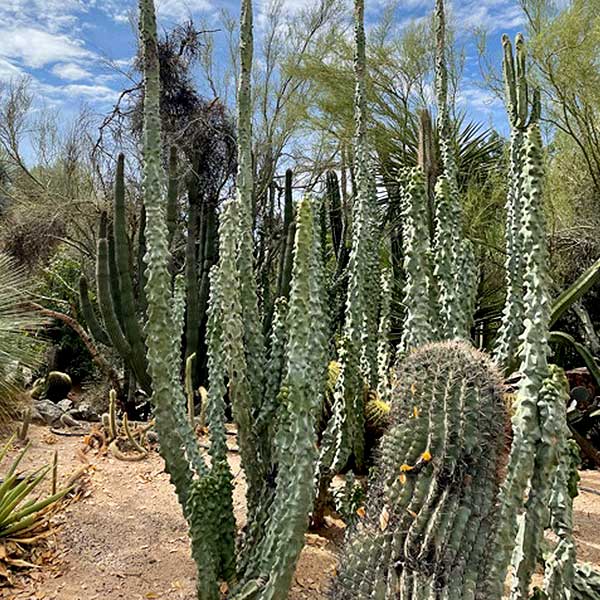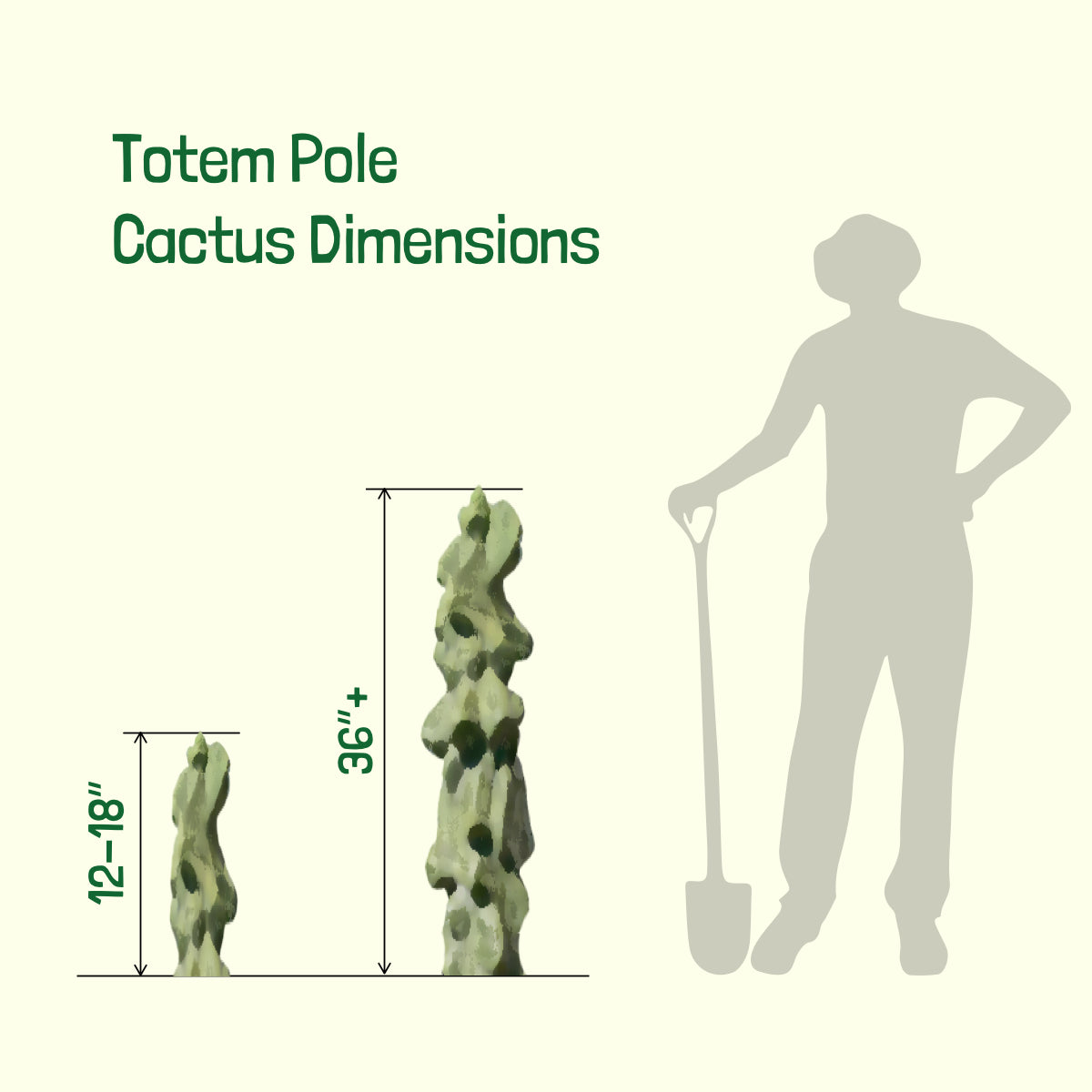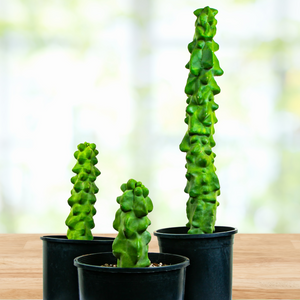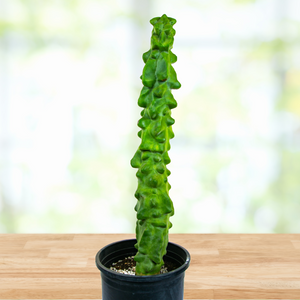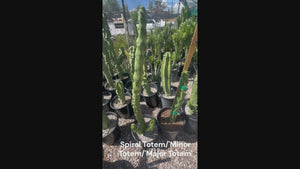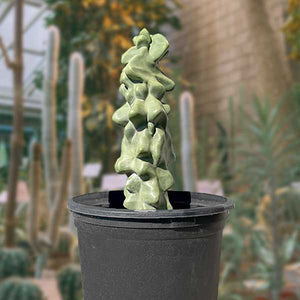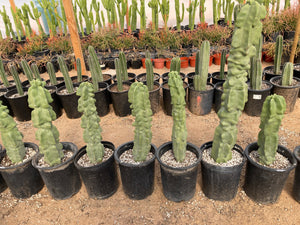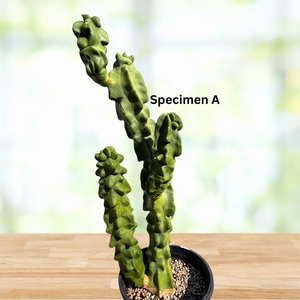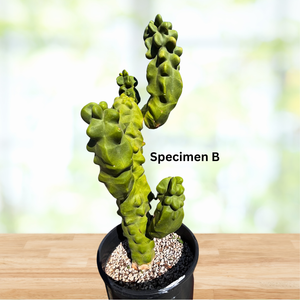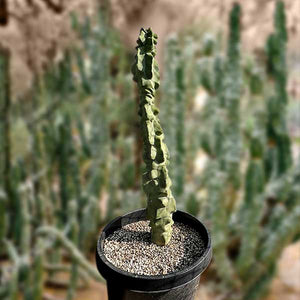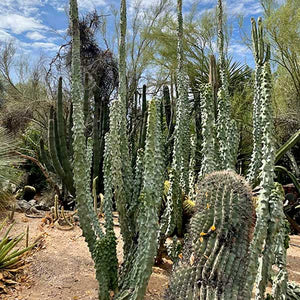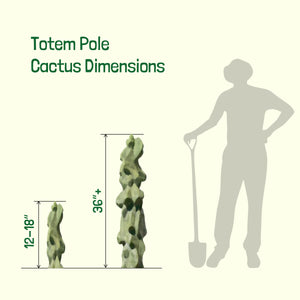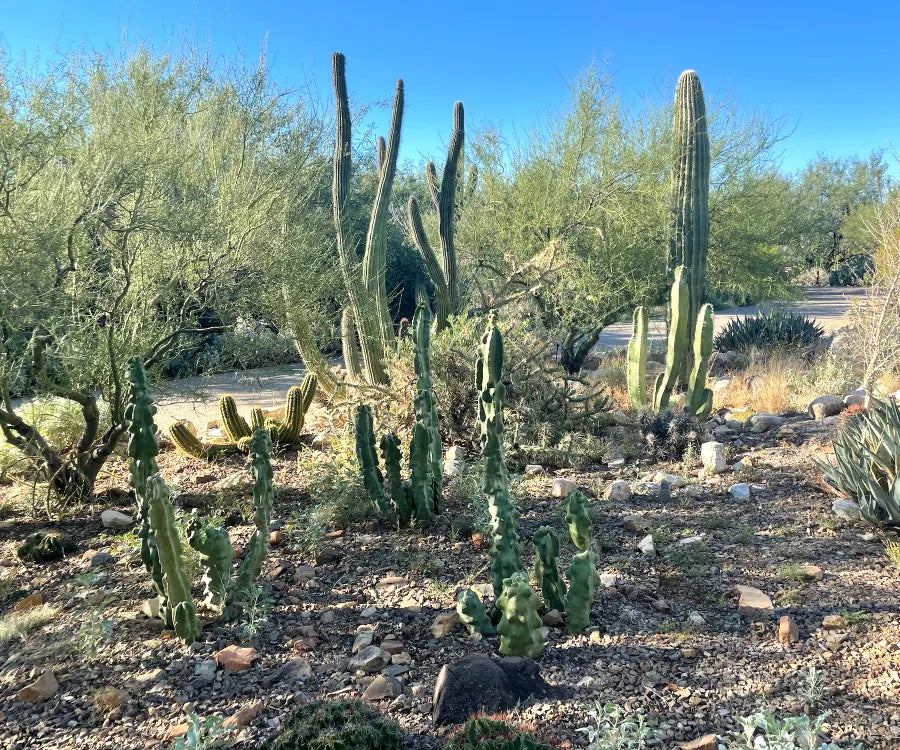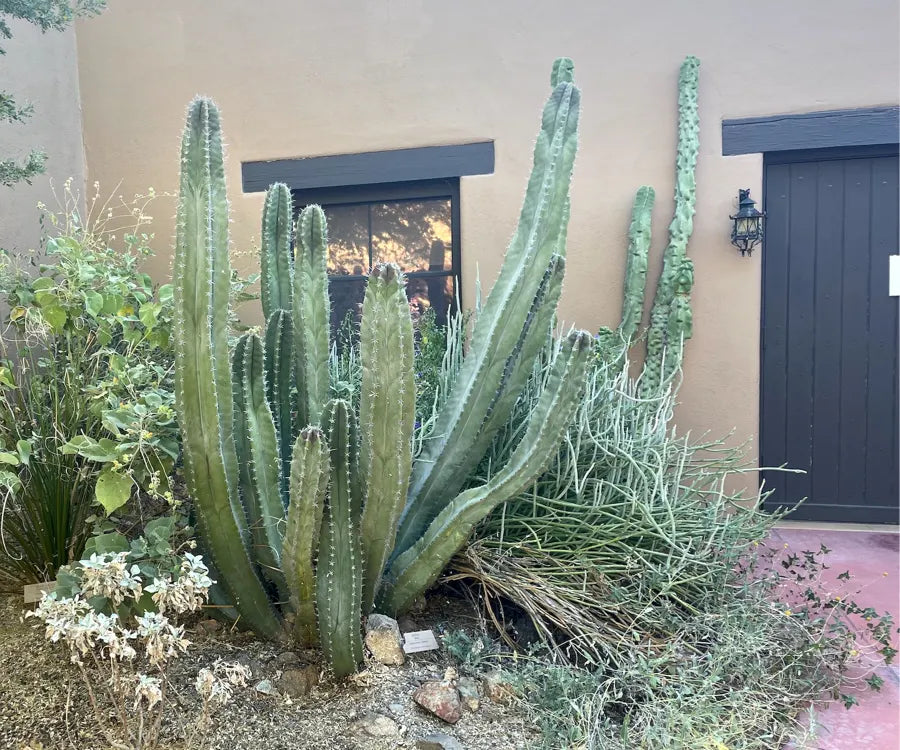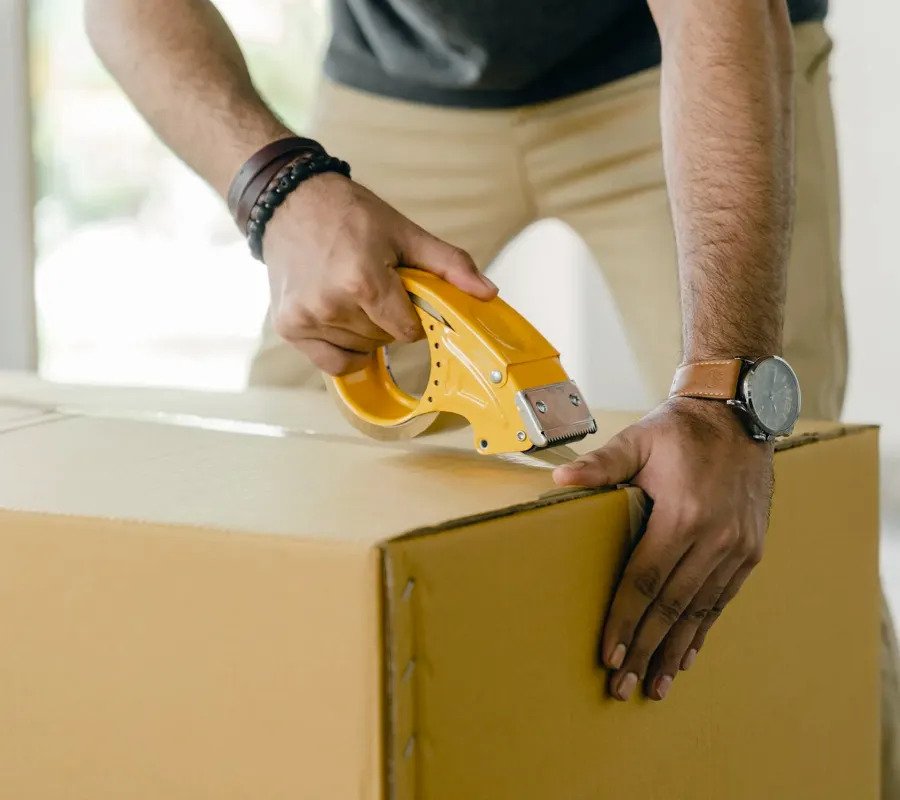🌵 Totem Pole Cactus (Lophocereus Schotti var. monstrosus)
Discover the Totem Pole Cactus, a captivating, spineless variety of the Sonoran desert Senita cactus, native to Baja, Mexico. This unique cactus showcases a knobby, columnar growth habit, adding a unique, sculptural touch to any landscape or container garden.
🌵 Key Features
🌿 Two Varieties:
Totem Pole "Major": Features thicker columns with more pronounced bumps and knobs.
Totem Pole "Minor": Thinner columns with a wavier appearance and faster growth, with quicker arm development.
🌱 Growth Habit: The Totem Pole cactus grows in a twisted, contorted form with irregularly spaced ribs, giving each plant a uniquely unpredictable and eye-catching look.
📏 Size: Mature specimens reach several feet tall, featuring an irregular, sculptural growth pattern.
❄️ Temperature Tolerance: Thrives in warm, arid climates but is not cold-tolerant below 28°F. For areas with frost or freezing temperatures, plant in a container that can be moved indoors during winter.
🌵 Ideal for
🪴 Container Gardening: Perfect for patios, decks, and balconies, where its distinctive form can be admired up close.
💧 Xeriscaping: A top choice for water-wise landscaping due to its low water requirements.
🏞️ Focal Points & Rock Gardens: The twisted stems make an unforgettable focal point and work beautifully in rock gardens or succulent collections.
🏠 Indoor/Outdoor Sculptural Element: The Totem Pole cactus’s quirky appearance adds an architectural flair, whether indoors or outdoors.
🌟 Why You’ll Love It
With its eccentric look, the Totem Pole Cactus is a favorite among cacti and succulent enthusiasts. Its unusual, sculptural form brings a modern desert vibe to any space, sparking conversation and admiration.
📦 Shipping & Planting Guarantee
Your Totem Pole Cactus will arrive in pristine condition, securely packaged and wrapped for easy stress-free planting. Every order from The Cactus Outlet includes planting, watering, and general care instructions.
💬 Still not sure?
Check out our reviews on Amazon! ⭐ The Cactus Outlet is the highest-rated provider of large cacti and succulents on Amazon!

